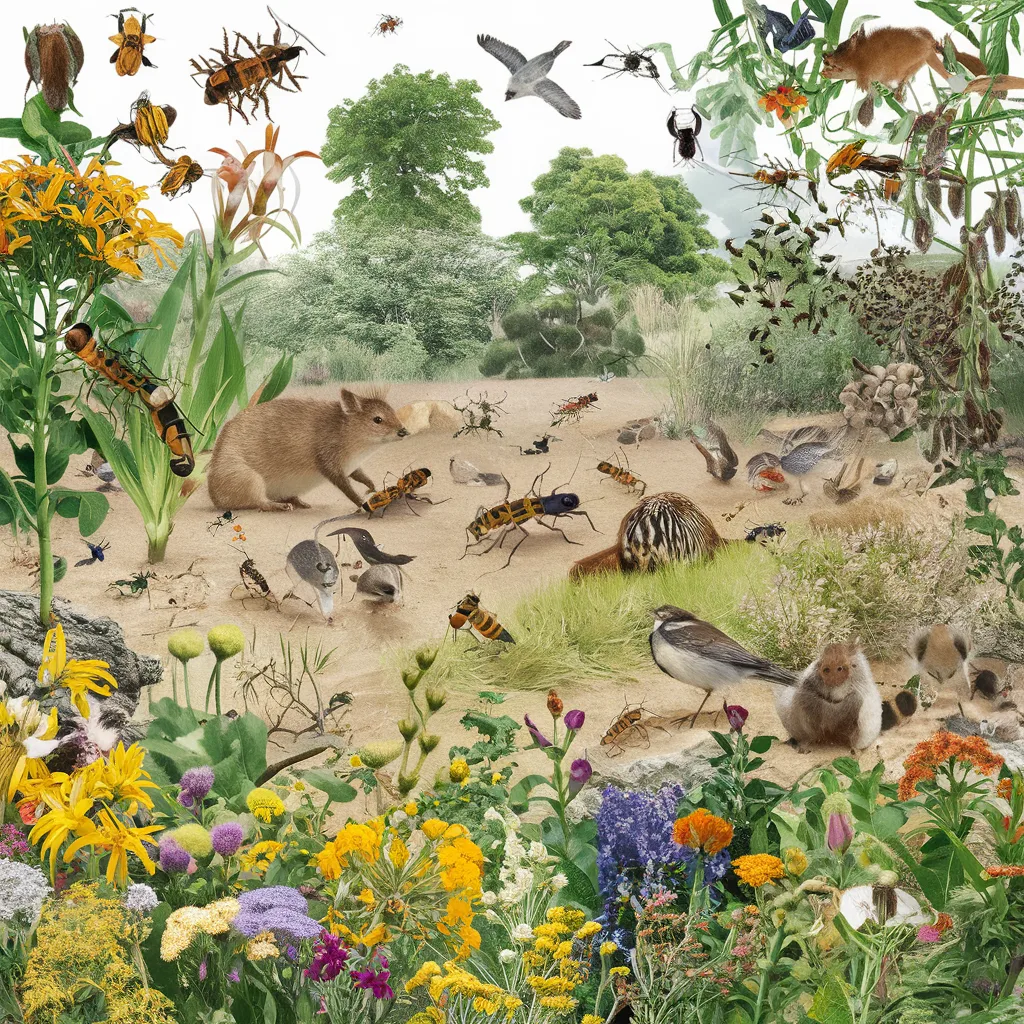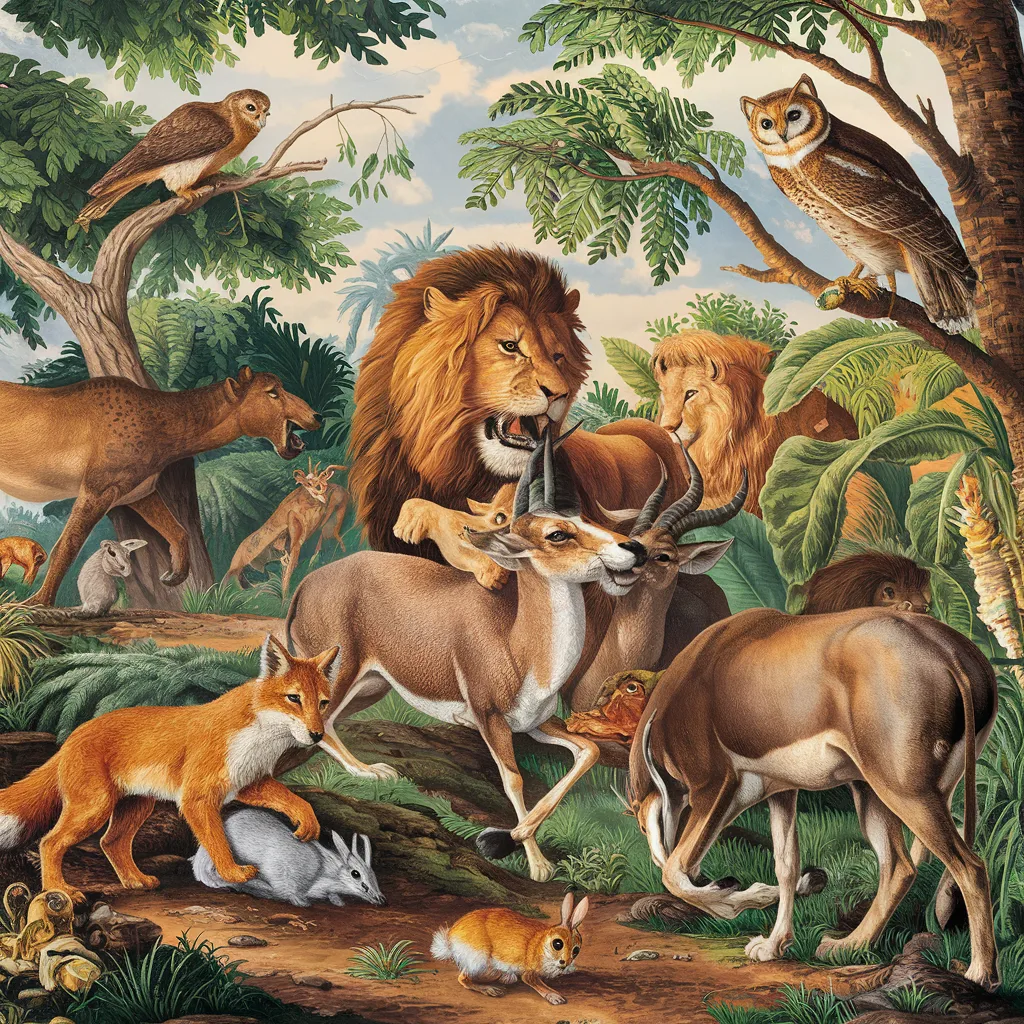Biotic factors are biological components of an ecosystem that affect its structure and function. They encompass all species, their interactions, and waste products. Biotic factors are the living components of an ecosystem, which include all species and their interactions. They have an important role in determining ecosystem structure, function, and dynamics. Understanding biotic variables is critical when researching ecological interactions, biodiversity, and ecosystem health.
Table of Contents
What is Biotic factors ?
Biotic variables are living components of an ecosystem that influence its survival and health. These factors include all creatures, their interactions, and biological processes. Biotic variables influence the structure, function, and dynamics of ecosystems. They encompass all species, their interactions, and waste products. Biotic factors are the living components of an ecosystem, which include all species and their interactions. They have an important role in determining ecosystem structure, function, and dynamics. Understanding biotic variables is critical when researching ecological interactions, biodiversity, and ecosystem health.

Types of Biotic Factors
1.Producers (Autotrophs)
Description:
Organisms that make their own food through photosynthesis or chemosynthesis.
Examples:
Plants include trees, grasses, and shrubs.
Algae: phytoplankton and seaweed.
Cyanobacteria are blue-green algae.
Role:
Solar or chemical energy is converted into organic chemicals, which serve as the foundation of the food chain.
2. Consumers (Heterotrophs)
Primary Consumers (Heterotrophs)
Description
sometimes known as herbivores, are organisms that directly consume producers.
Examples
It include deer, rabbits, and caterpillars.
Role:
Move energy from producers to higher trophic levels.
Secondary consumers
Description
Secondary consumers, sometimes known as carnivores, feed on prime consumers.
Examples
It include wolves, snakes, and hawks.
Role:
Keep herbivore populations under control and the ecology balanced.
Tertiary Consumers

Description
Tertiary Consumers are top predators that feed on secondary consumers.
Examples
It include lions, eagles, and sharks.
Role
Regulate secondary consumer populations and keep the ecosystem stable.
Omnivores

Description
Omnivores graze on both plants and animals.
Examples
It include bears, humans, and raccoons.
Role:
Increase dietary flexibility and aid in nutrient cycling.
3. Decomposers and Detritivores
Decomposers
Description
Decomposers are microorganisms that break down dead organic matter to recycle nutrients back into the ecosystem.
Examples
It include bacteria and fungus.
Role
Decompose organic material to release nutrients that can be utilized by producers.
Detritivores
Description
Detritivores consume decomposing organic debris.
Examples
It include earthworms, millipedes, and dung beetles.
Role:
Break down organic material to help in decomposition and nutrient cycling..
Examples of biotic factors:
Plants include trees, grasses, shrubs, and flowering plants.
Animals include insects, birds, mammals, reptiles, and amphibians.
Microorganisms include bacteria, fungus, protozoa, and algae.
Human activity includes agriculture, urban development, pollution, and deforestation.
Factors Affecting Biotic Factors
1. Abiotic variables
Temperature: It influences organisms’ metabolic rates and survival.
Water availability: It is critical for life; it influences the distribution, quantity, and behavior of species.
Light: It affects photosynthesis in plants as well as animal activity patterns.
Soil quality: It influences plant growth and nutrient availability.
Nutrient Availability: Nutrients are required for development and reproduction; restricting nutrients can reduce productivity.
2. Interactions among organisms
- Competition It occurs when organisms compete for the same resources (such as food and space). It may be intraspecific (within the same species) or interspecific (between different species).
- Predation: Predators feed on prey, which affects population levels, habits, and evolutionary adaptations.
- Mutualism: Both species gain from the relationship (for example, bees pollinating flowers and nitrogen-fixing bacteria in plant roots).
- Commensalism: It occurs when one species benefits while the other is neither aided nor hurt. For example, barnacles on whales.
3. Population Density
High population densities can enhance competition, disease transmission, and social interactions, all of which have an impact on individual fitness and survival.
4. Human Impact
Habitat Destruction: Urbanization, deforestation, and pollution deplete habitats and resources, resulting in biodiversity loss.
Climate change: It alters habitats, influencing species distribution and behavior.
Invasive species: It can outcompete, feed on, or introduce illnesses into native species, altering ecosystems.
5. Evolutionary Adaptations
Organisms adapt to their surroundings over time, which influences their interactions and responsibilities in the ecosystem. Natural selection drives these modifications, which improve fitness and survival.
Frequently Asked Question(FAQ)
What is Biotic factors ?
Biotic variables are living components of an ecosystem that influence its survival and health. These factors include all creatures, their interactions, and biological processes. Biotic variables influence the structure, function, and dynamics of ecosystems.
What are the types of Biotic factors ?
The types of Biotic factors are:
1.Producers (Autotrophs)
2. Consumers (Heterotrophs)
3. Decomposers and Detritivores
Related Article

